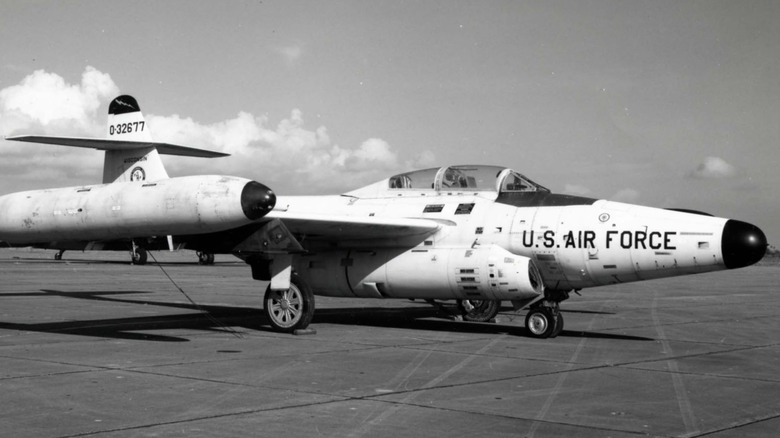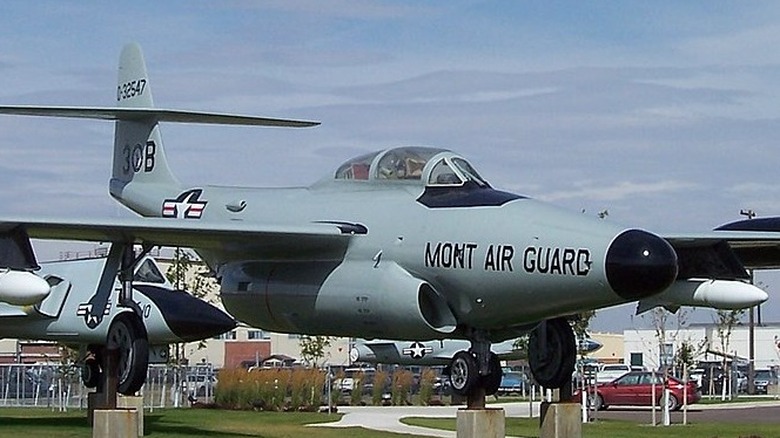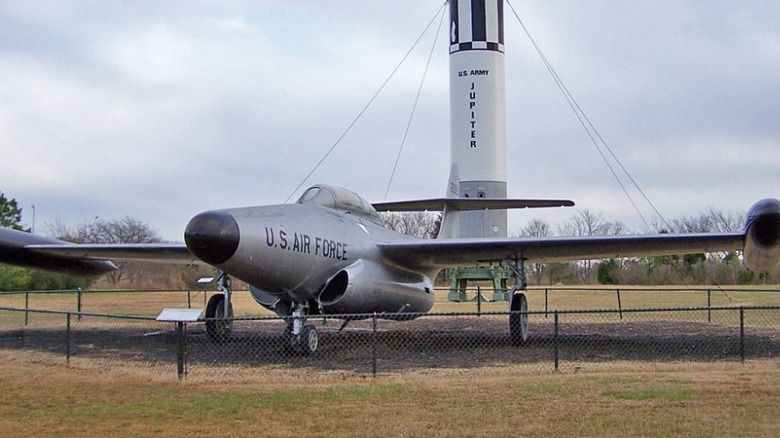America's Cold War Defender: The Interceptor Jet Armed With Nuclear Missiles
Like so many members of the animal kingdom, humankind is at its most unpredictable and dangerous when threatened. Sadly, times of great peril like the Cold War seem to bring out the biggest technological advances. Such was this case of the United States Air Force, which was designing a bomber capable of carrying a nuclear payload.
As nuclear weapons were stockpiled around the world, who was to say nobody would use them first in aggression? The concepts of nuclear deterrence and mutually assured destruction started to develop here, as did the simple, devastating notion that nobody wins a nuclear war. The planet loses.
The period was marked, then, by the development of formidable nuclear-armed aircraft such as the British Avro Vulcan. Such aircraft were, as a rule, armed with nuclear weapons in the hope that they would never have to be used. The United States military, meanwhile, created another airplane with a very similar mindset: the Northrop F-89 Scorpion.
The development of the Northrop F-89 Scorpion
The United States Air Force has a long and formidable history of iconic jets. Some are acclaimed for performance on the battlefield, and others are known simply for remarkable design. The Scorpion was developed in the late 1940s, and it had a daunting role with the Air Defense Command: to be able to, as the National Museum of the United States Air Force puts it, "locate, intercept and destroy enemy aircraft by day or night under all types of weather conditions."
To this end, it was armed with advanced and extensive radar technology, which required a second crew member at all times for monitoring. The Scorpion — so named for a stabilizing element that made its tail seem risen and more prominent — was intended as a defensive jet, able to swiftly respond to and intercept an attack whenever it arose.
The Scorpion could travel at up to 627 mph (just over 1000 kph), which would certainly help it keep pace with any opponent, and had a very special weapon with which to strike back. Along with its AIM-4C Falcon missiles, it also wielded rockets known as AIR-2A Genies. The latter were the very first nuclear weapons equipped on such an interceptor aircraft.
The service history of the Scorpion
Much like many military aircraft, the Scorpion went through a number of repurposing and redesigns during its active life. As the F-86A, its recorded 670.9 mph (1079.7 kmph) in September 1948 was a new world record, per the Museum of Aviation.
Around a decade later, the F-89J Scorpion (which was nuclear-armed) took part in the July 1957 nuclear tests of Operation Plumbbob. Air & Space Forces Magazine states that Captain Eric Hutchinson and Captain Alfred Barbee were the pilots of that F-89J that launched the first air-to-air nuclear weapon.
The F-89 continued to serve in some capacity for another 12 years, until the final model was taken in by the National Museum of the United States Air Force. The venerable aircraft is another example of military aviation's adaptability and innovation. Though it never had to unleash its nuclear might against aggressors, the fact that it was so capable of doing so surely made the U.S. a formidable nuclear foe during the Cold War.


